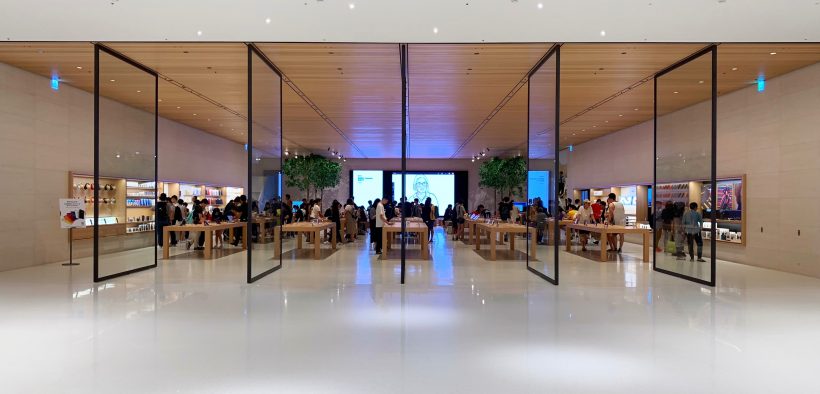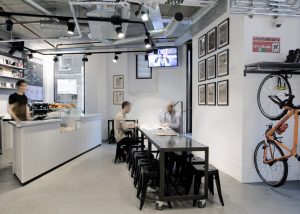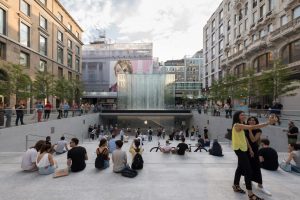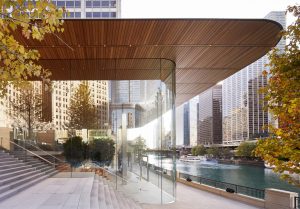First Experience, Then Retail
Share

Why would anyone bother to travel to a physical retail experience? One click and you can get your hands on practically anything online. They’d have to search for parking or battle public transport queues to purchase a product that’s probably available online for less anyway? We can’t ignore it, online retail has rapidly changed the way we shop.
Thanks to the likes of Uber, Deliveroo, and similar digital service platforms, our expectations have shifted. We’ve become accustomed to a world of vendors delivering instant gratification. So, how do we as retailers adapt to this very genuine problem? Perhaps we need to think of it instead as retail’s most significant opportunity. It’s created a state where brick-and-mortar stores have been forced to confront that they need to make a paradigm shift and re-calibrate everything they thought to be true about retail.
Let’s not be afraid; let’s be challenged and grateful that online shopping has brought us to this point. What we’re seeing is retailers rapidly evolving the ways in which they connect with space and align their real and virtual touch points. It’s inspiring exciting, and efficient new ways of transacting and engaging with product.
The answer lies in how customers intuitively experience the transaction and how retailers benefit from the experience. This comes down to people ‘going shopping’ instead of ‘doing shopping’ If I am going shopping, I am touching, I am smelling, I am hearing, I am engaging, I am being educated, I am being inspired, and I am immersed. Crucially, a connection has been made between the customer and the retailer as a result of the experience.
For the Generation Z culture, the experience economy is very real; they want to engage with physical retail. It’s the reason they’re prepared to stand in the rain to see a live concert. The Internet is nothing new to them. It’s woven into every part of their lives, which is why they are searching unconsciously for an offline escape.
Their previous generations, Millennials and Gen-Y’s, are also constantly ‘on’ and armed with handhelds. We are all shopping in a world that needs to respect a smarter, faster, and more connected experience. For stores to remain relevant, they need to be both viscerally engaging and immersive. They need to act as both social hubs and retail environments that can also offer an offline retreat.
Being in a store environment allows us to touch, feel, taste, smell, and experience products in a tangible way that digital representations of products on a screen can’t match. It’s not about watching a golf video in a sporting goods store. It’s about swinging a golf club. It’s not about speaking to a chat bot about your product needs. It’s about relating to an enthusiastic and delightfully human product expert. It’s not using virtual reality to escape the boredom of the store. It’s using a remarkable store to escape reality – to enter a different world. Consumers crave physical experiences at retail – not because they can’t get the goods they want online, but because of an almost primordial need to interact with the things we gather.
It’s a challenge to sell experience as a mechanism to a board when success is measured on KPI’s such as conversion rates, ROI’s, and other measurable formulas. However, we will have to embrace this new thinking and find ways to facilitate customer immersion. We need to embrace the experiences that we can offer in our stores and allow that to inform how the retail will work. It’s experience first, retail second. This is how we will drive customers into our physical retail spaces.
What ‘retail experience’ are we looking for?
 To develop retail as part of the experience economy, we need to see retail and department stores as the new ‘hangout areas’ that service the ‘hangout culture’ synonymous with the Gen Z shopper. Their experience in stores embodies and develops a sense of ownership of the brand. A relevant example is Rapha, a cycling wear brand that embraced the notion of a club before it explored a retail offering. The stores are considered to be a hybrid of a bar, café and club experience. It’s a place where people come together for group rides, to watch cycling films and to generally be part of a growing culture that embraces a cycling lifestyle.
To develop retail as part of the experience economy, we need to see retail and department stores as the new ‘hangout areas’ that service the ‘hangout culture’ synonymous with the Gen Z shopper. Their experience in stores embodies and develops a sense of ownership of the brand. A relevant example is Rapha, a cycling wear brand that embraced the notion of a club before it explored a retail offering. The stores are considered to be a hybrid of a bar, café and club experience. It’s a place where people come together for group rides, to watch cycling films and to generally be part of a growing culture that embraces a cycling lifestyle.
This hangout culture is also noticeable in contemporary hotels. We see lobbies have transformed from empty spaces where stiff staff hover to become spaces where we are encouraged to work, meet for coffee and gather to drink after work and engage in a meaningful, visceral space. The Ace Hotel ( NYC, London, and Miami ) and The Hoxton Hotel ( London) both understood this phenomenon and embraced it.
If hospitality has got this right, shouldn’t retail be taking learnings from them and apply it to our stores? What about fitting rooms as mini hotel suites, along with comfortable and tastefully styled lobbies? Point of sale points are instead concierges, where you can do everything from click + collect, book a movie and restaurant or have the item you’ve bought gift wrapped?
Enter through the gift shop
Museums and galleries have also got this right. They make a massive deal of their stores. MOMA in New York is referred to as ‘that amazing design shop with a gallery attached’. They shifted their thinking and merged the experience of the gallery into a retail space, and it’s paid off.
We can do the same to enhance the retail experience when customers enter our stores. Perhaps they enter through a mini gallery, a pop-up exhibition, or a micro, curated gift shop. Store entrances should be seen as gateways that embrace the brand culture, create more hang out spaces, or expose shoppers to mini-exhibitions. The impact will go deeper than what we’re doing which is filling stores with digital screens and static mannequins. It’s about harnessing our customers to add to the kinetic energy of the store entrance.
Let’s look more closely at some of the key trends changing the retail experience.
Meet the makers: educate me, and the resurgence of craft
How do we bring product to life and facilitate engagement with our brands? Stores are currently solving this by exposing shoppers to the process of manufacture in food markets. They’re introducing craftsmen into stores to enhance product with personalisation services or bespoke upsell options. Consider how inserting a tailor into the middle of your store would anchor the energy and bring a pulse into a seemingly dull environment…
Curation cuts through the clutter
Again, we learn from galleries, where art is edited to tell the artist’s story and display pieces that are only the very best. Similarly, products in stores need to be sourced and grouped with curated direction. Product is not just about what you need, it’s about how it makes you feel. By connecting like-minded products in new ways in stores, we will ignite a desire in our customers.
The Temple
Retail can become the temple to a brand. This takes us to a place where the brand no longer worries about whether items are bought in the store or online. The objective is to deliver a brand expression that’s immersive so that a connection is made with the customer. We see this in Burberry, Regent Street, where customers are immersed and educated into all that is Burberry. From the Burberry Café, to a monogram service, to information about how the product is made and digital screens in the fitting rooms, every detail has been reimagined with experience at its core.
Other ‘temples’ include the Nike House of Innovation in New York which is an utterly immersive experience that is aided by technology in an app, enabling customers to experience an online presence in a physical space.
Stores of the future right now
It’s no longer enough to design retail spaces as compelling environments, with the best detailing, most engaging lighting and kinetic experiences in the form of digital without giving thought to what the space is actually used for. Stores need to invest into transforming physical spaces into zones that aren’t just about selling product. They re-merge as civic spaces that serve a community. If we take Apple as an example, we can see how they’ve shifted from being a retail cathedral that dominated urban areas as a powerful icon. They’ve moved to an approach where they develop spaces that act as civic squares, urban plazas or town halls.
Apple in Milan and Chicago have been designed as public spaces first, and retail spaces second. Both deliver a connection with the cities and environments that they support, which allows the retailer to engage at a level that they might not have been afforded with the previous approach.

The new store in Milan, Apple Piazza Liberty is an ensemble of two fundamental elements – a stepped plaza and a fountain. Located just off the Corso Vittorio Emanuele – one of the most famous pedestrian streets in Milan – visitors are drawn towards the piazza by the sight of the dramatic fountain, creating a significant new public space, all of which is engaging as a public urban space before it’s a retail space.

The store in Chicago embraces the river and creates a dramatic sense of place without distracting from the Chicago skyline or the river views. Instead, the building has embraced both skyline and river. What’s significant about these two examples is that the stores have placed public space into the heart of the strategy, giving retail a purpose for being there.
Conclusion
Due to this paradigm shift in physical space and changing behavioural patterns we will need to allow for a radically increased proportion of experience in our stores to help us connect with our customers and to inspire them to ‘go shopping’ rather than ‘do shopping’. Retail is certainly not dead. We need to embrace the new world technology has delivered, rather than complain about how online has impacted retail. It’s clear that if we drive and master the experience economy, the future of retail stores looks bright.



















Follow us on social media